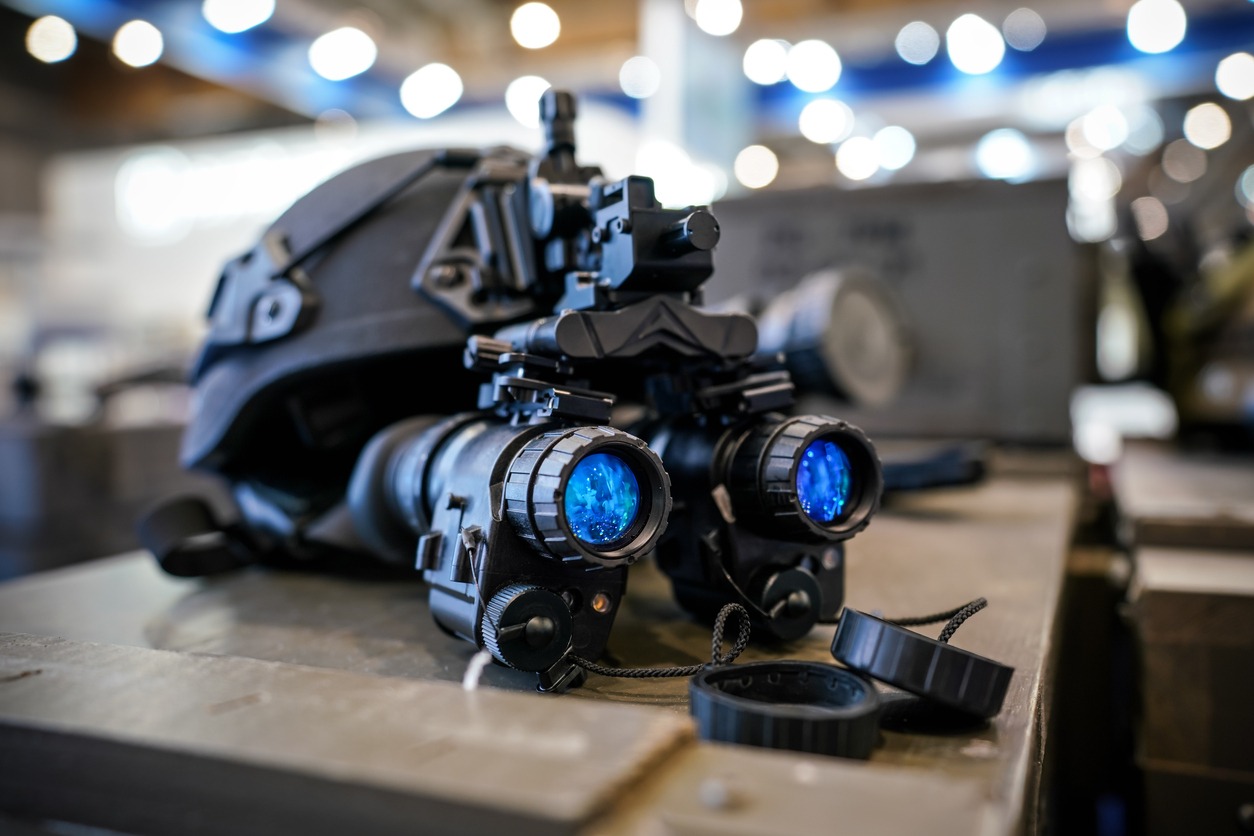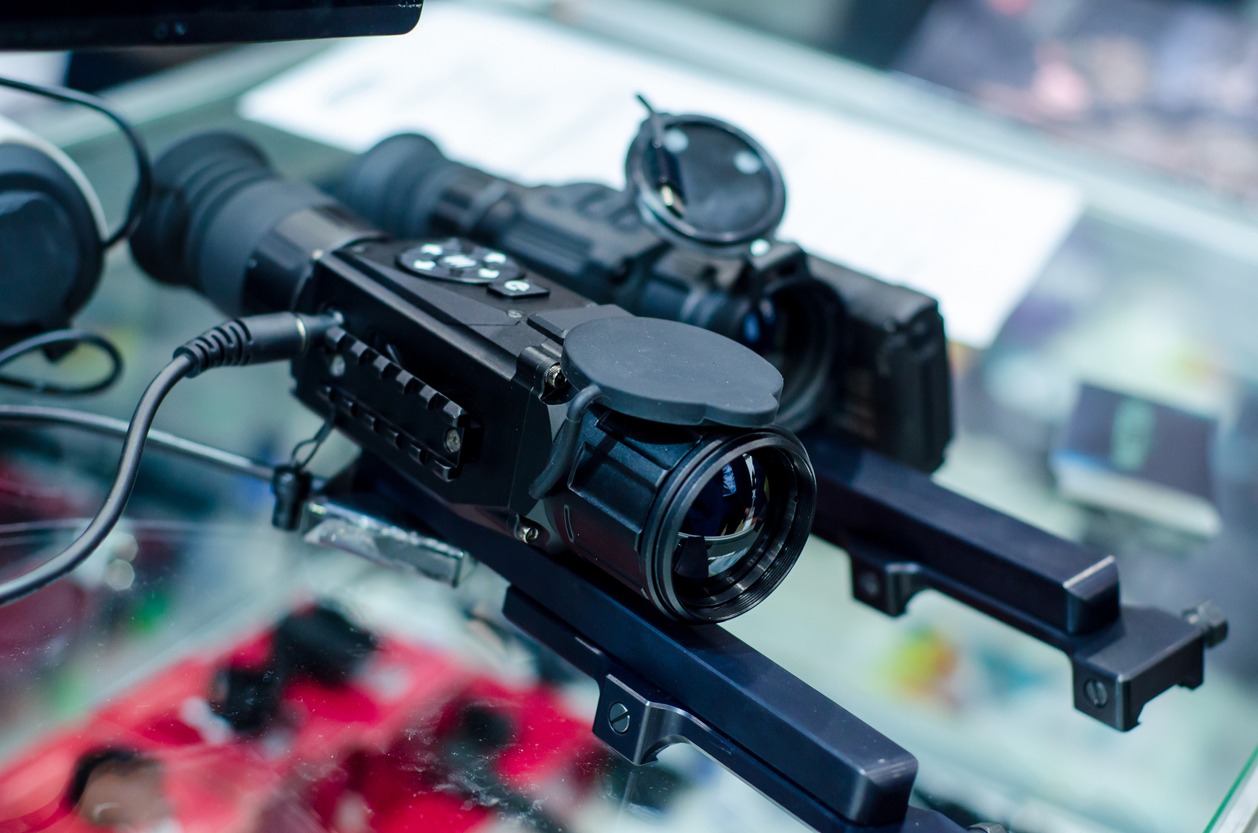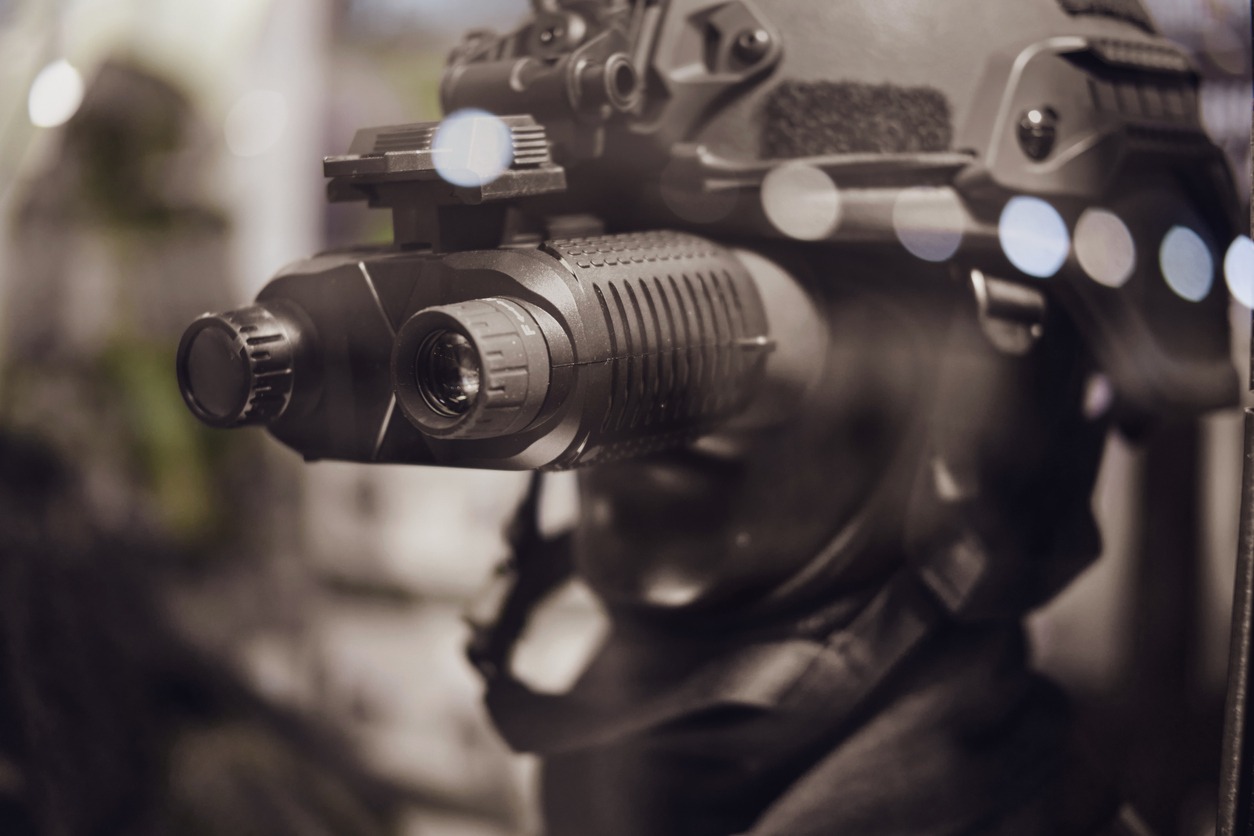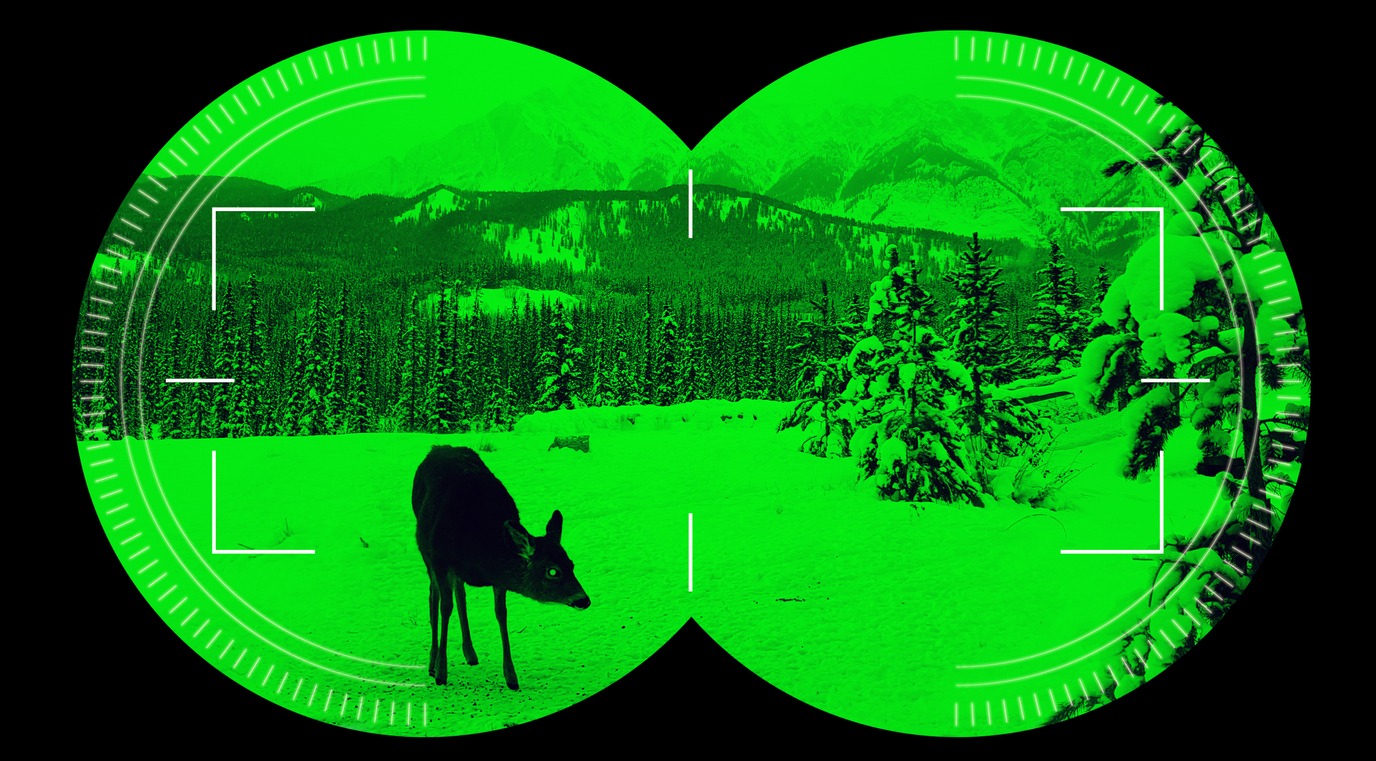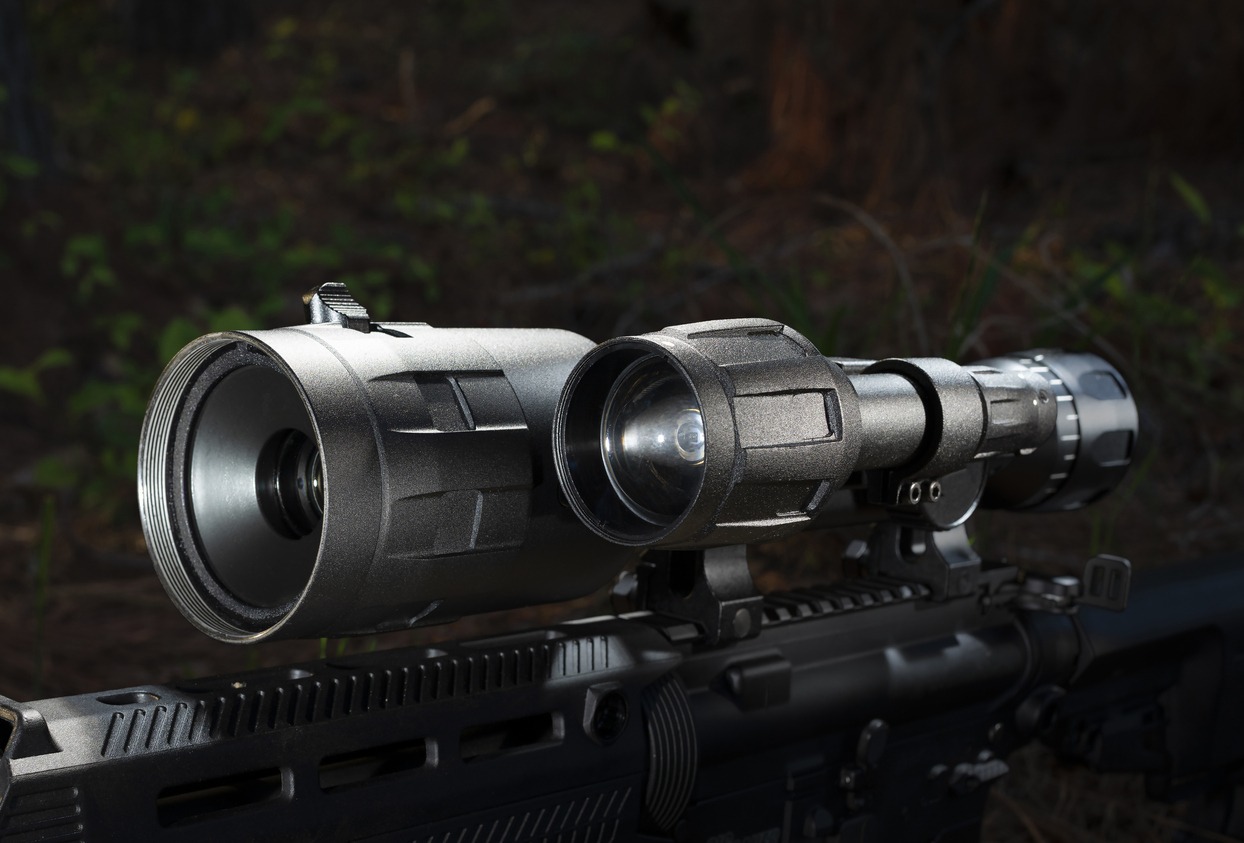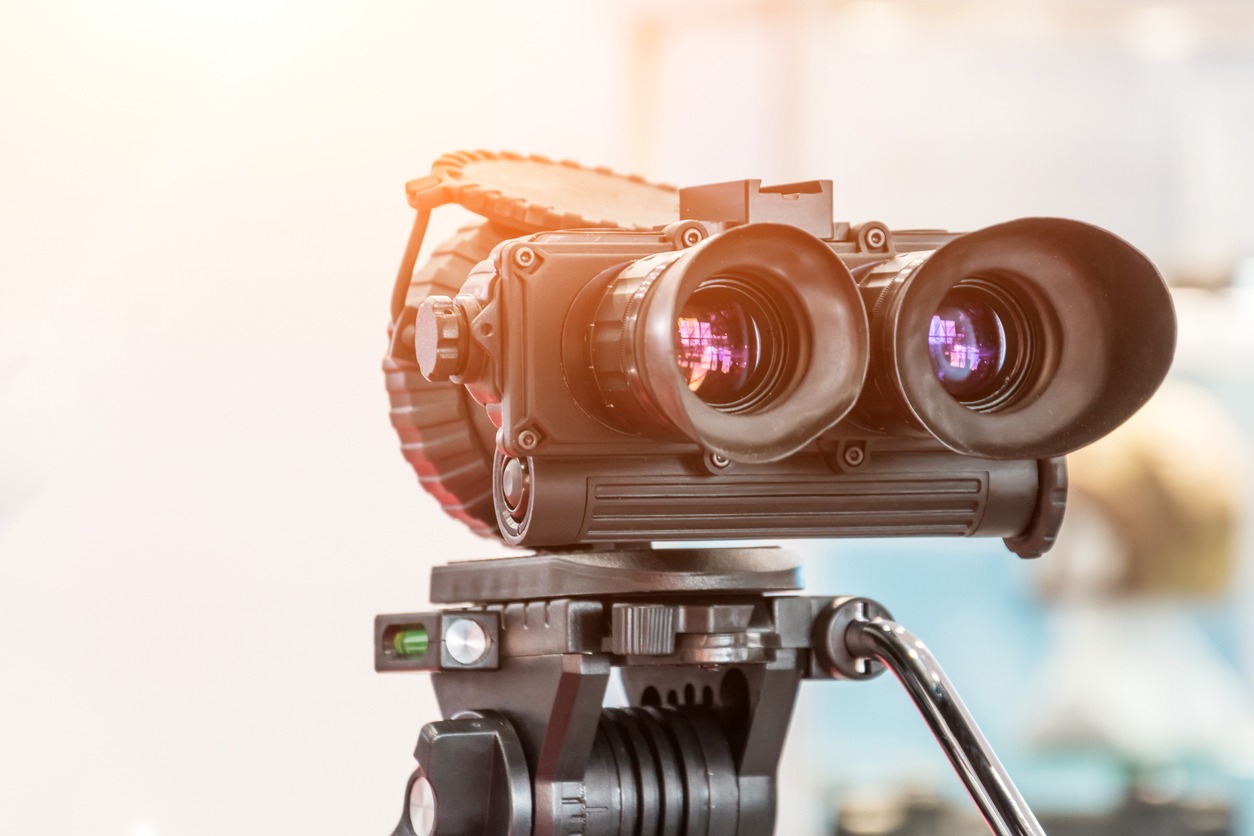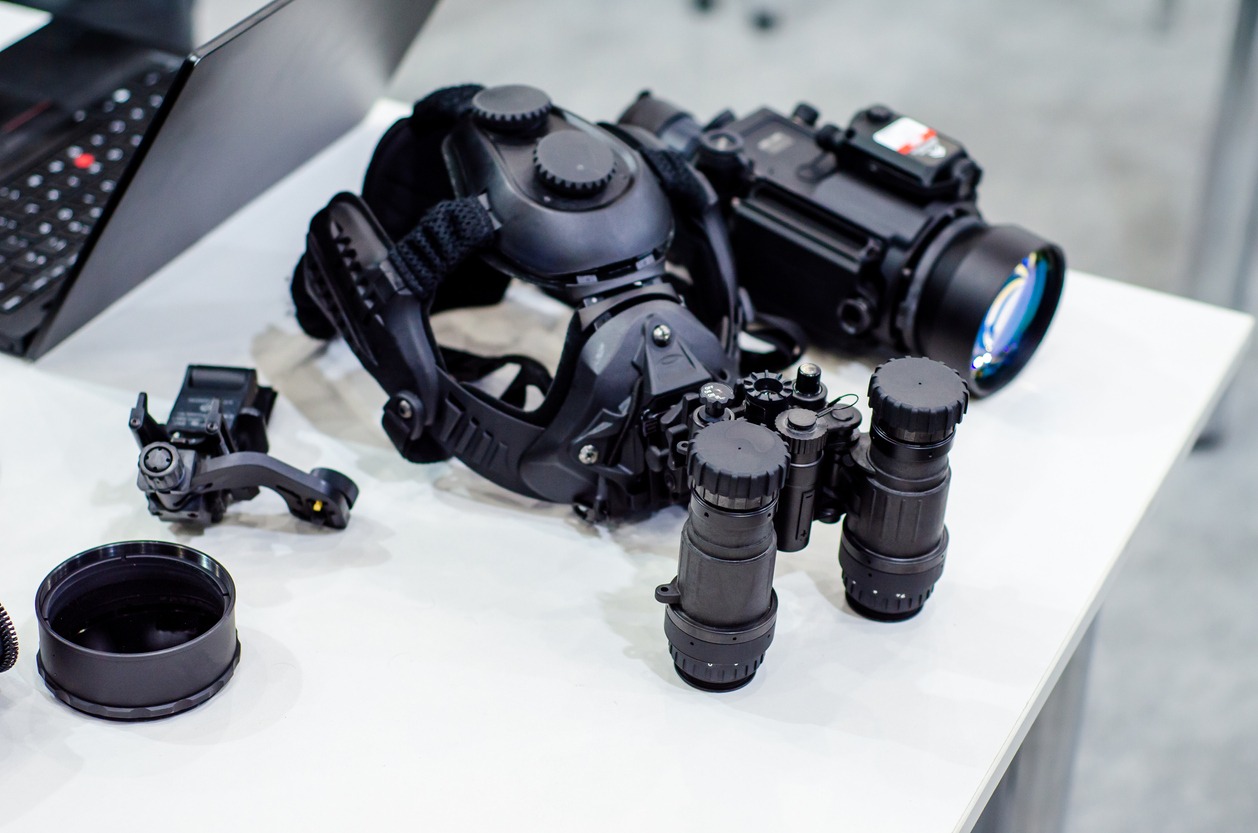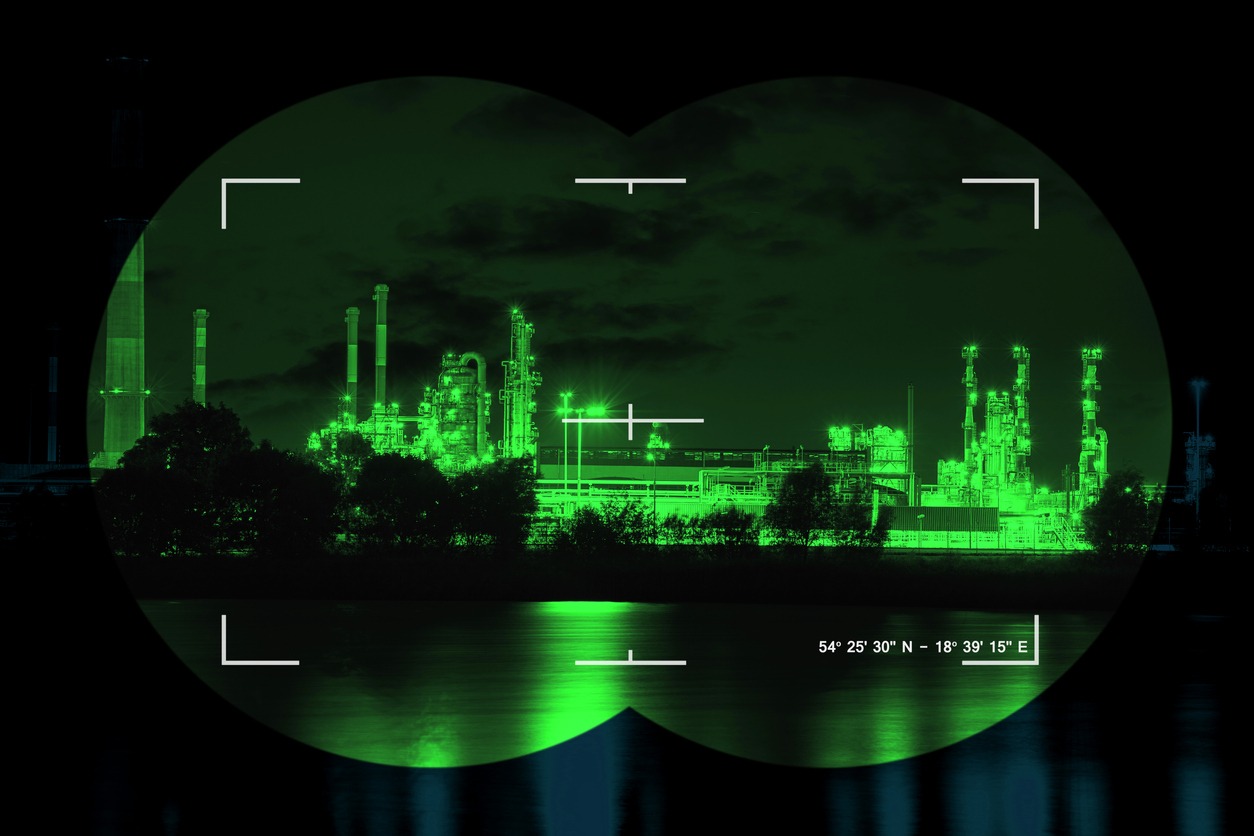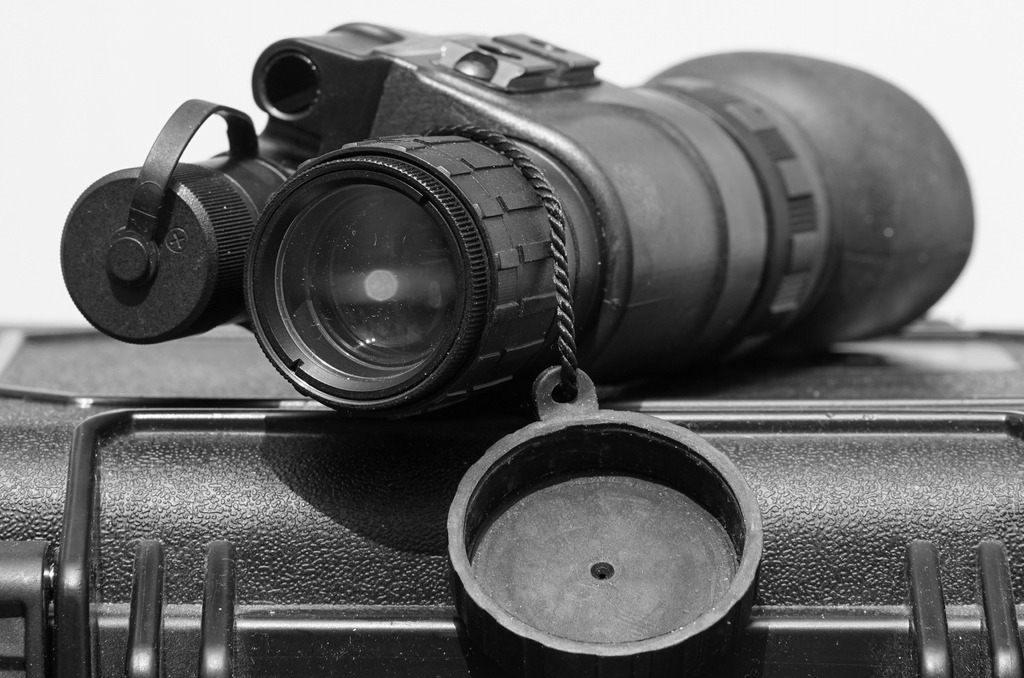Optical systems are configurations of optical components that are used to direct and control the behavior of light in a variety of contexts. These systems may contain components such as lenses, mirrors, prisms, and filters to exert control over the way light behaves. Optical systems have numerous applications, including imaging, communication, measurement, and many others. These applications allow us to interact with and gain a better understanding of the world around us.
Night vision technology, more commonly referred to simply as night vision, is an advanced form of technology that gives people the ability to see in low-light and almost completely dark environments. It is utilized in a variety of settings, such as the military, law enforcement, the observation of wildlife, and even in consumer products like night vision goggles and security cameras.
Amplification of already-present light sources or detection of thermal emissions from objects are the two primary modes of operation for night vision equipment. Components like objective lenses, image intensifier tubes (used in image intensification night vision), phosphor screens, eyepieces, and power sources are typical examples of what can be found in these types of devices. The technology behind night vision has improved with each successive generation, both in terms of the image quality it produces and the level of sensitivity it affords. It is not without its drawbacks, such as its high price and its susceptibility to sources of intense illumination, but it is constantly being improved and now provides enhanced vision and perception in low-light settings.
What is Night Vision?
The term “night vision” refers to both the technology and the ability to see in conditions of low light or near-total darkness, which the human eye would typically find difficult or impossible to perceive. Night vision technology enhances and amplifies the existing ambient light or other sources of radiation, allowing the observer to see objects and scenes even when there is no visible light present.
There are many different ways that night vision can function, but the most common ones include the following:
Image Intensification
The creation of a visible image is accomplished through the collection and amplification of photons (particles of light) that are readily available. To achieve this level of amplification, image intensification night vision equipment makes use of several optical components as well as an image intensifier tube.
Thermal Imaging
The ability to detect infrared radiation, or heat, that is emitted by an object is essential to thermal night vision. The system generates an image that is based on the temperature differences, which enables the observer to “see” the temperature differences. This technology performs exceptionally well even in the complete absence of light and under unfavorable weather conditions.
The term “night vision” refers to a set of technologies that have a wide range of applications, including the following:
1. Military and Defense
Night vision is essential to military operations because it enables service members to navigate, locate targets, and keep their situational awareness even when the lighting conditions are poor or when it is nighttime.
2. Law Enforcement
Night vision is used by the police and other law enforcement agencies for surveillance, search and rescue missions, and other tactical operations that take place in the dark.
3. Wildlife Observations
Researchers as well as nocturnal wildlife enthusiasts often use night vision equipment to observe and investigate the activities of nocturnal animals.
4. Outdoor Activities
Night vision goggles and scopes are popular pieces of equipment for nighttime activities among campers, hunters, and other people who enjoy being outdoors.
5. Security and Surveillance
For monitoring areas even when there is very little light, security systems and surveillance cameras can be equipped with night vision technology.
6. Aviation and Machine
During nighttime operations in the aviation and maritime industries, it plays an essential part in the navigation and safety of those operations.
There have been multiple generations of development in night vision technology, and each generation has brought with it improvements in image quality, sensitivity, and overall performance. Night vision is becoming easier to use and more adaptable as technology continues to advance. This is expanding its range of applications and making it possible for humans to see better in environments with difficult lighting conditions.
How Night Vision Optics Differ From Regular Optics
1. Purpose and Function
Night Vision Optics
Night vision optics are engineered to function effectively in conditions of low light or almost complete darkness. They are designed to boost the amount of ambient light that is already present or detect thermal emissions (in the case of thermal imaging) to produce visible images in environments with difficult lighting conditions.
Regular Optics
Traditional optics, such as binoculars, telescopes, and the lenses of cameras, are intended for use during the daytime and rely on external sources of natural light. They are not equipped with the ability to improve their visibility in low light or see in complete darkness.
2. Image Amplification
Night Vision Optics
To create a visible image, night vision optics make use of a technology known as image intensification. This technology works by amplifying the existing ambient light, which can include light from the moon or stars. Users can see in the dark as a result of this amplification process.
Regular Optics
The amplification capabilities that are present in night vision equipment are not present in regular optics. They create images entirely based on the amount of natural light that is accessible to them.
3. Thermal Imaging
Night Vision Optics
Certain night vision optics, in particular those that are based on thermal imaging, can detect and visualize the heat that is emitted by objects. Because of this, they can function normally despite the presence of adverse weather conditions and total darkness because they are not dependent on any external light sources.
Regular Optics
Regular optics do not possess the ability to detect temperature differences nor do they have thermal imaging capabilities.
4. Components
Night Vision Optics
Night vision equipment is typically made up of several intricate parts, such as objective lenses, image intensifier tubes, phosphor screens (in image intensifiers), eyepieces, and various types of power sources. The nighttime image is amplified and displayed more clearly as a result of the collaborative efforts of these components.
Regular Optics
There is no requirement for image intensification or thermal sensors when using regular optics because the configurations are much simpler. Regular optics typically consist of lenses or mirrors to focus and magnify incoming light.
5. Cost and Complexity
Night Vision Optics
Due to the specialized components and technology required for low-light operation, night vision technology is generally more expensive and complicated than regular optics. This is because of how the technology works.
Regular Optics
Because they are less complicated and cost less money, regular optics are more widely available for a variety of activities that take place during the day.
6. Application
Night Vision Optics
Optics designed for nighttime use are most commonly put to use in situations where visibility in low light or at night is of the utmost importance. Some examples of these scenarios include military operations, law enforcement, the observation of wildlife, and nighttime activities in the great outdoors.
Regular Optics
Daytime activities such as birdwatching, stargazing, photographing sporting events, and other types of photography all make use of regular optics.
In a nutshell, night vision optics are specialized optics that are designed to work effectively in low-light and nighttime conditions. They do this by either amplifying the light from sources that are already present or by detecting the thermal emissions from nearby objects. They are utilized for a variety of tasks, including the enhancement of night vision during military and law enforcement operations and the facilitation of observation of wildlife after dark. On the other hand, regular
Understanding the Core Components of Night Vision Optics
1. Image intensifier tubes
Image intensifier tubes, which are more commonly referred to as image intensifiers in their shortened form, are essential components of night vision equipment and systems. These tubes are essential in amplifying the natural light that is present in the environment, which is necessary for maintaining nighttime vision. The following is an explanation of how image intensifier tubes work and their characteristics:
Purpose and Function
Image intensifier tubes are intended to improve visibility in low-light conditions by amplifying the natural light that is already present. This includes both moonlight and starlight.
To produce visible images in low-light or nighttime conditions, they are utilized in a variety of night vision devices, such as night vision goggles, night vision scopes, and night vision cameras. These devices produce night vision images.
Application
Image intensifier tubes find use in a wide variety of fields and applications, including law enforcement, military operations, surveillance, wildlife observation, and even recreational night vision devices.
Limitation
Blooming can occur in image intensifier tubes when very bright light sources overload the tube, which can result in streaks or distortion in the image being displayed.
Image Intensifier tubes function the best in dim light and might not do so well in total darkness. Their efficiency is maximized in dim light.
With that, Image intensifier tubes are essential components of night vision technology. These tubes are responsible for producing visible images in low-light or nighttime conditions by amplifying the existing ambient light. They are indispensable for a wide variety of applications that call for enhanced nighttime visibility and heightened awareness of the surrounding environment.
2. Infrared illuminators
Infrared illuminators are devices that emit infrared (IR) light, which is beyond the range of human vision, to increase the visibility of objects in environments with a low amount of available light or complete darkness. They are typically employed in conjunction with night vision devices (NVDs) to provide artificial illumination that is undetectable to the human eye but recognizable to night vision equipment. Infrared illuminators have the following salient characteristics:
Purpose
Infrared illuminators are used to improve the performance of night vision devices by providing an additional source of illumination in environments where there is insufficient visible light. This is accomplished by illuminating the scene with infrared light rather than visible light.
They find use in a wide variety of applications, including military operations, surveillance, and the observation of wildlife.
Range and Power
The power of an infrared illuminator and the distance it can cover are the two primary factors that determine how well it works. Illuminators with a higher power level can illuminate objects at greater distances.
Depending on the type of illuminator and the amount of power it puts out, the range can be anywhere from a few meters to several hundred meters.
Limitations
Even though infrared illuminators are efficient at improving one’s ability to see in the dark, their range and coverage may be restricted.
Other night vision devices can pick up on bright IR illumination, which can potentially give away the location of the illuminator to potential enemies.
IR light can be scattered and lose some of its effectiveness if it is exposed to weather conditions such as fog or rain.
In a nutshell, infrared illuminators are electronic devices that produce an invisible form of light called infrared and are used to improve the visibility of objects in low-light or dark conditions. They are most effective when used in conjunction with electronic tools that allow for night vision. They can be utilized in a wide variety of settings and are extremely helpful tools for enhancing nighttime surveillance, security, and observation.
Why Use Advanced Night Vision Optics?
Optics with advanced night vision are utilized for several important reasons in a variety of professional, tactical, and recreational settings. When compared to more basic or older-generation night vision equipment, these more advanced systems offer a significant number of advantages. The following are some of the most important justifications for using advanced night vision optics:
1. Enhanced Low-Light Visibility
Users can see with greater clarity and detail in environments where traditional vision is severely limited thanks to advanced night vision optics, which provide superior visibility in low-light and nighttime conditions.
2. Improved Target Identification
Because they have a higher resolution and provide a clearer image, modern systems make it much simpler to recognize details of individuals or objects that are hidden from view. In operations involving the military and law enforcement, where accurate target identification is essential, this is of the utmost importance.
3. Extended Range
Users can observe and engage targets at greater distances thanks to the extended detection and recognition ranges offered by many of the more advanced night vision optics. This is of utmost significance in contexts involving military operations and surveillance.
4. Reduced Size and Weight
Night vision technology has come a long way in recent years, and modern devices typically incorporate lightweight materials and compact designs, making them more comfortable for extended use and easier to carry in the field.
5. Better Durability and Reliability
These systems are designed to operate reliably even in the most demanding circumstances and settings. They are designed to be long-lasting, resistant to shock, and impervious to the elements, which ensures that they will perform reliably even in difficult circumstances.
6. Reduced Image Distortion
Image blooming, lens flares and halo effects are three examples of common image distortions that can be mitigated by using more advanced systems that are outfitted with improved optics and image processing technology.
The Impact of Advanced Night Vision Optics on Surveillance and Security
The development of advanced night vision optics has had a significant impact on the surveillance and security industries, significantly enhancing the capabilities of both individuals and organizations tasked with the responsibility of monitoring and protecting a variety of environments. The following is a list of significant ways in which advanced night vision optics have had an impact on surveillance and security:
1. Enhanced Nighttime Visibility
The ability to conduct effective surveillance and security operations during the nighttime and in low-light conditions is perhaps the most obvious impact that will occur as a result of this change. A clearer and brighter view of areas that would otherwise be shrouded in darkness is provided by advanced night vision optics. This enables security personnel to detect and respond to threats more effectively.
2. Multi-functional Capabilities
Day and Night Operations
The night vision and daylight imaging capabilities of these optics allow for a smooth transition between day and night operations without the need to switch out equipment. Because of its adaptability, this security system provides uninterrupted surveillance and protection.
Thermal Imaging
Many different kinds of multi-functional optics have thermal imaging capabilities built into them, which make it possible to detect heat signatures. The use of thermal imaging is especially beneficial when it comes to finding hidden dangers, following individuals even in total darkness, and monitoring areas with poor visibility due to smoke, fog, or camouflage.
Range-finding
Some of the most cutting-edge optics include range-finding technology, which determines the distance between the device being used and the object being observed. This is extremely important for the accurate acquisition of targets, particularly in the context of military and law enforcement applications.
Wireless Connectivity
Integration with wireless communication systems enables the sharing of data and video feeds in real-time with remote command centers or security teams. This ensures that responses are coordinated and that decisions are made quickly.
Geolocation and Mapping
Integration with wireless communication systems enables the sharing of data and video feeds in real-time with remote command centers or security teams. This ensures that responses are coordinated and that decisions are made quickly.
Types of Multi-Functional Lens Systems in Night Vision Optics
1. Fixed lenses
Fixed lens night vision optics are a type of night vision equipment that comes with a lens that is permanently attached to the device and cannot be removed. These products have been developed with a lens configuration that is tailored to a particular use case or purpose to achieve optimal performance.
Optics with a fixed lens for use in nighttime situations are typically developed with one particular use in mind, such as surveillance, security, hunting, or the observation of wildlife. The fixed lens is selected to fulfill the particular requirements of this application
These optics typically have a design that is small and lightweight because they have a fixed lens. This makes them simple to transport and use out in the field. They are suited for use with head-mounted systems, handheld devices, or weapon-mounted configurations respectively.
2. Zoom lenses
Zoom lens is a category of night vision devices that come equipped with zoom lenses that can be adjusted by the user. This provides the user with the ability to modify the magnification and focal length of the device to meet a variety of different requirements for observation or surveillance.
The magnification level of zoom lens night vision optics can be altered by the user thanks to the variable zoom lens system that comes equipped with these devices. This adjustment can provide a broad field of view at lower magnifications to maintain situational awareness, or it can provide a narrower field of view at higher magnifications to accurately identify targets.
These optics are adaptable and can be used for a wide variety of purposes thanks to the zoom feature that can be adjusted. Users can modify the settings of the device to accommodate a variety of contexts, including long-distance observation, surveillance of large areas, and close-range target identification.
To produce crisp and clear images regardless of the level of zoom, quality zoom lens night vision optics incorporate optics and coatings of the highest possible standard. Users can keep the image’s clarity and brightness even as the magnification is changed thanks to this feature.
3. Smart lenses
Smart lenses are devices that integrate cutting-edge technologies and features to improve their overall performance and functionality.
The image quality could be improved, noise could be reduced, and low-light performance could be improved with the help of smart lens optics that incorporate digital image processing capabilities. They may come equipped with in-built wireless or data connectivity, which enables users to stream or share live video feeds, images, or data with other devices or remote locations.
For easier and more natural use, smart lens optics may come equipped with more sophisticated control systems. These may include voice commands, gesture controls, or touchscreens.
Adjustments to the brightness and contrast of the image may be made automatically by these optics to accommodate shifting conditions in the surrounding environment.
Conclusion
In conclusion, advanced night vision optics are a remarkable example of a technological advancement that has significantly improved our capacity to see in low-light and nighttime conditions and to carry out tasks in those environments. These cutting-edge technologies have a wide range of potential applications in a variety of domains, such as the military, law enforcement, surveillance, wildlife observation, and recreational activities.
In low-light and nighttime conditions, advanced night vision optics provide superior visibility by either amplifying the existing ambient light or detecting thermal emissions to produce clear and detailed images. These optics offer a higher resolution and better image quality, which enables accurate target identification and reduces the risk of making a mistaken identification, which is especially important in crucial circumstances.
Numerous modern systems come equipped with a variety of multi-functional capabilities, such as thermal imaging, zoom lenses, and various connectivity options. As a result, these systems are flexible instruments that can be adapted to a wide variety of situations. The use of advanced optics enables other devices, such as weapons sights, rangefinders, drones, and communication systems, to be integrated with them in a seamless manner, which in turn facilitates collaborative and coordinated operations.
In essence, the development of advanced night vision optics has revolutionized our capability to operate effectively in low-light and nighttime scenarios. These optics have provided valuable tools for professionals as well as enthusiasts. It is reasonable to anticipate that in the not-too-distant future, night vision solutions will be even more advanced and capable than they are. This will allow their utility and impact to spread even further across a wide variety of domains.
